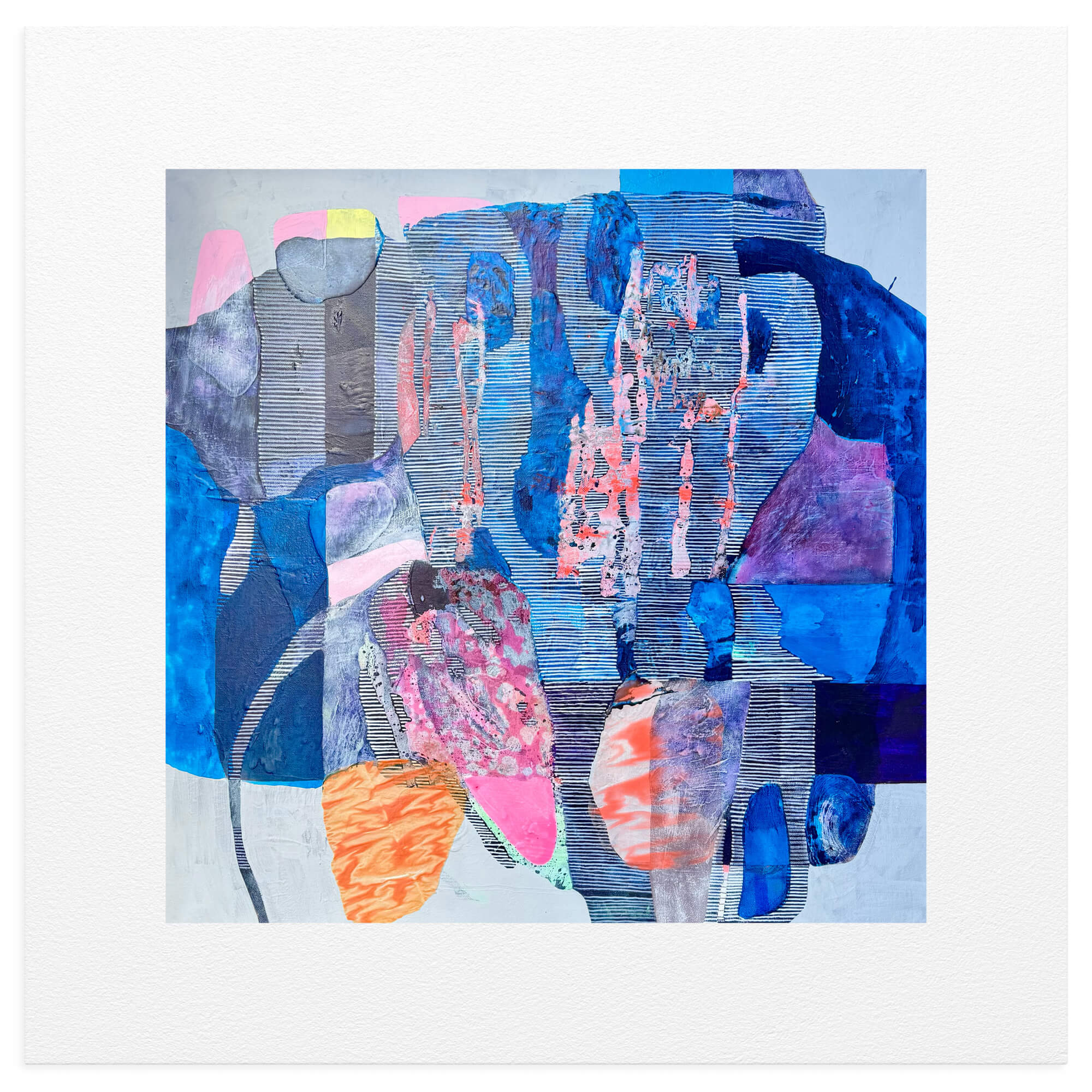
The plates above the core of our beings are like the plates of the Earth – floating on a mantle, always recording past eons, always anticipating infinite landscape. They are alive and in a condition of divergence or convergence, or in the process of transformation.
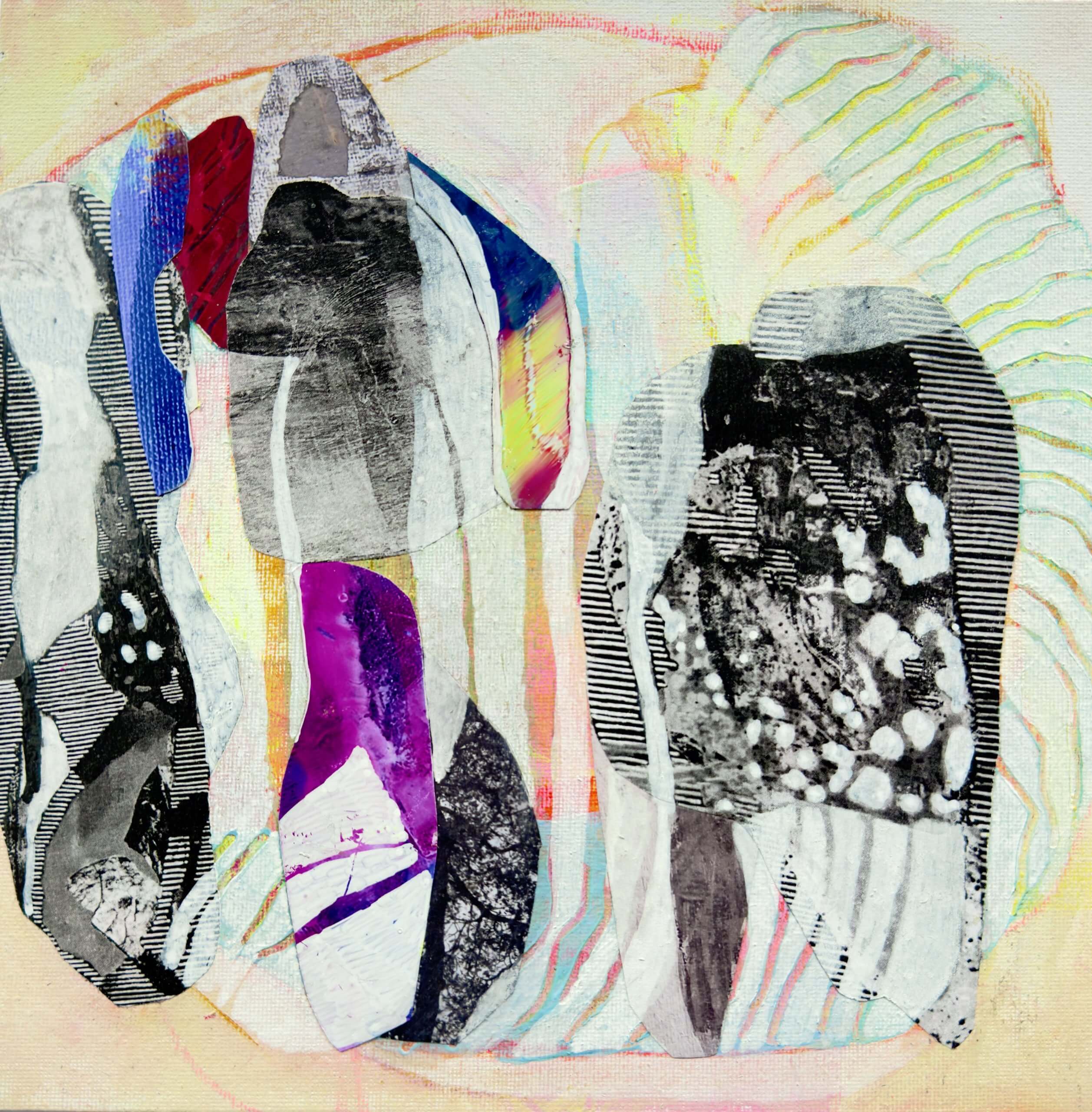
Curating non-referentiality is fracturing conventions. Different sensory processing and consequent alternative communication require a a simultaneously shared and non-shared basis. A unique language – the language with initially one world and one speaker – has unknown references until the first contact: then, a ‘nation of the two’ (Kurt Vonnegut) is shaping new surfaces that undergo weathering and erosion until a certain familiarity can be established. The works of Adrianna Lup have her geological sense embedded into them: at play here is your availability to truly learn the modal verbs of access into depths or those of reaching anaerobic heights. To communicate here is to accept that something can be certainly, possibly or impossibly easy to reach.
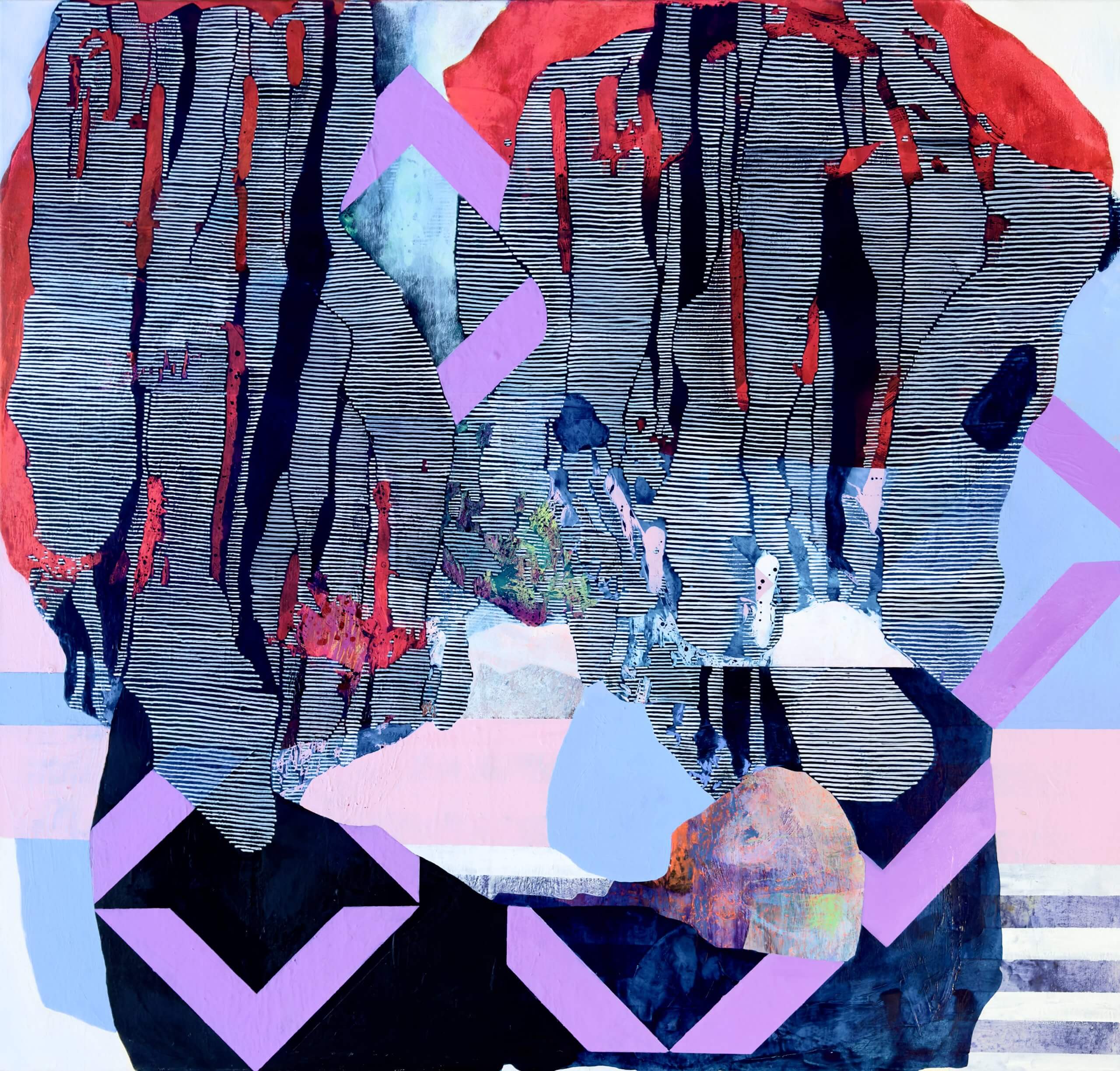
“The Third Horizon” unfolds as a visual meditation on thresholds — not as fixed lines, but as fluid states of becoming. The composition is structured around vertical, veil-like forms that suggest both architectural solidity and ephemeral passage. These layered planes create a sense of multiple realities coexisting, each partially obscuring and revealing the next.
The red, luminous lakes act as activations, points where hidden energies surface, hinting at unseen alignments beyond the immediate frame. Rather than functioning as focal points in a conventional sense, they work as port markers, orienting the viewer toward an unseen spatial or spiritual convergence.
The interplay of cool lavenders and pale blues with warmer, earth-bound tones generates a dynamic equilibrium — a visual embodiment of the “third horizon” as a conceptual space where the remnants of the known meet the architecture of the not-yet. The geometry, both rigid and interrupted, evokes the diagrams of sacred architecture, yet here the “plan” is not fixed; it is in flux, responsive to an inner pulse.
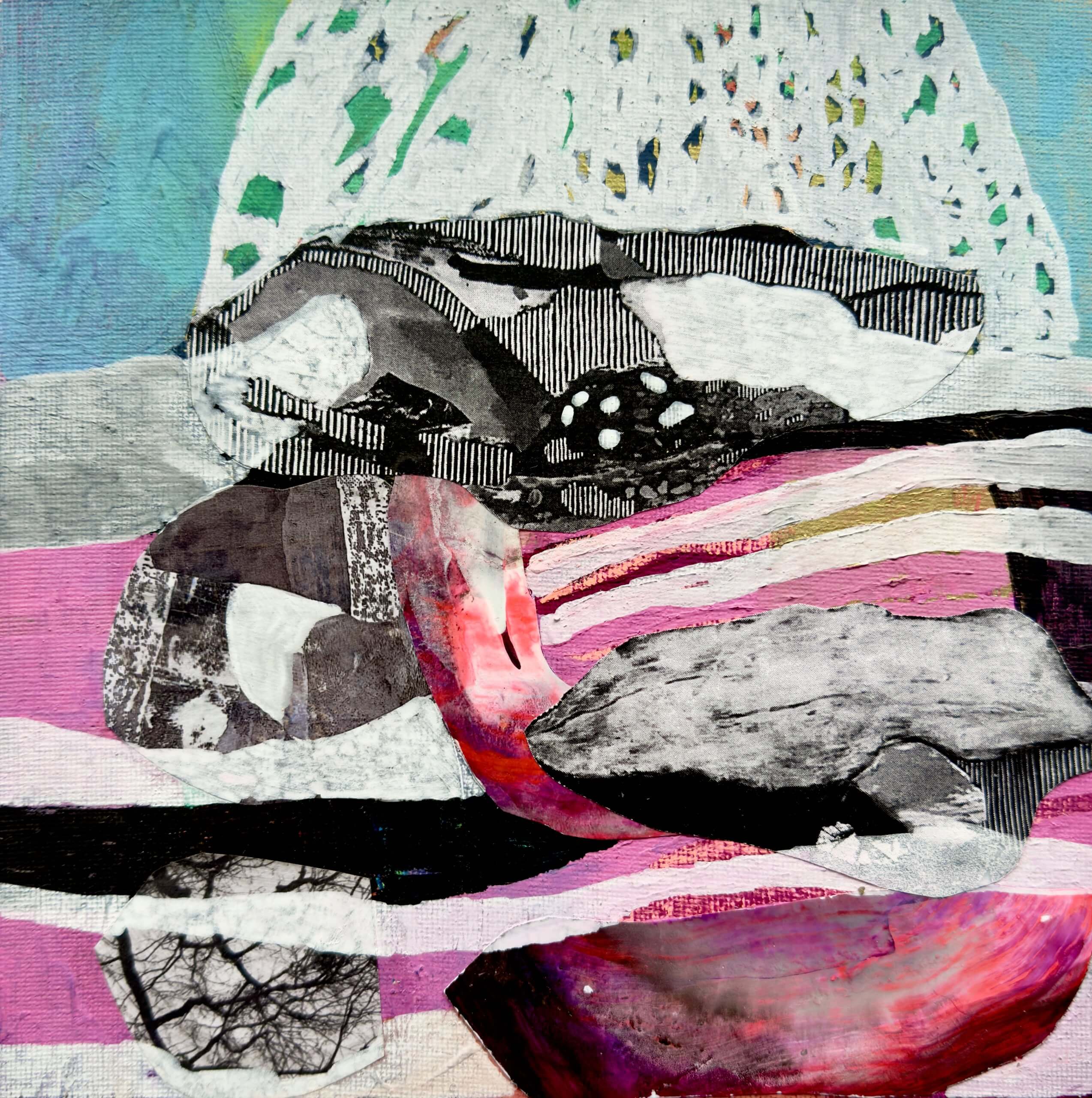
Tiny membrane-bound structures found in our cells generate the energy our bodies need to function. They have funny names such as mitochondria and they perform serious functions such as sustaining life. Highlanders – such as the sherpa guides and porters in the highest rough mountains of the world – are able to breath freely and produce heat in environments where oxygen is low and cold is unbearable. Lowlanders need to acclimatize. For midlanders like us there is always something usually called painting.
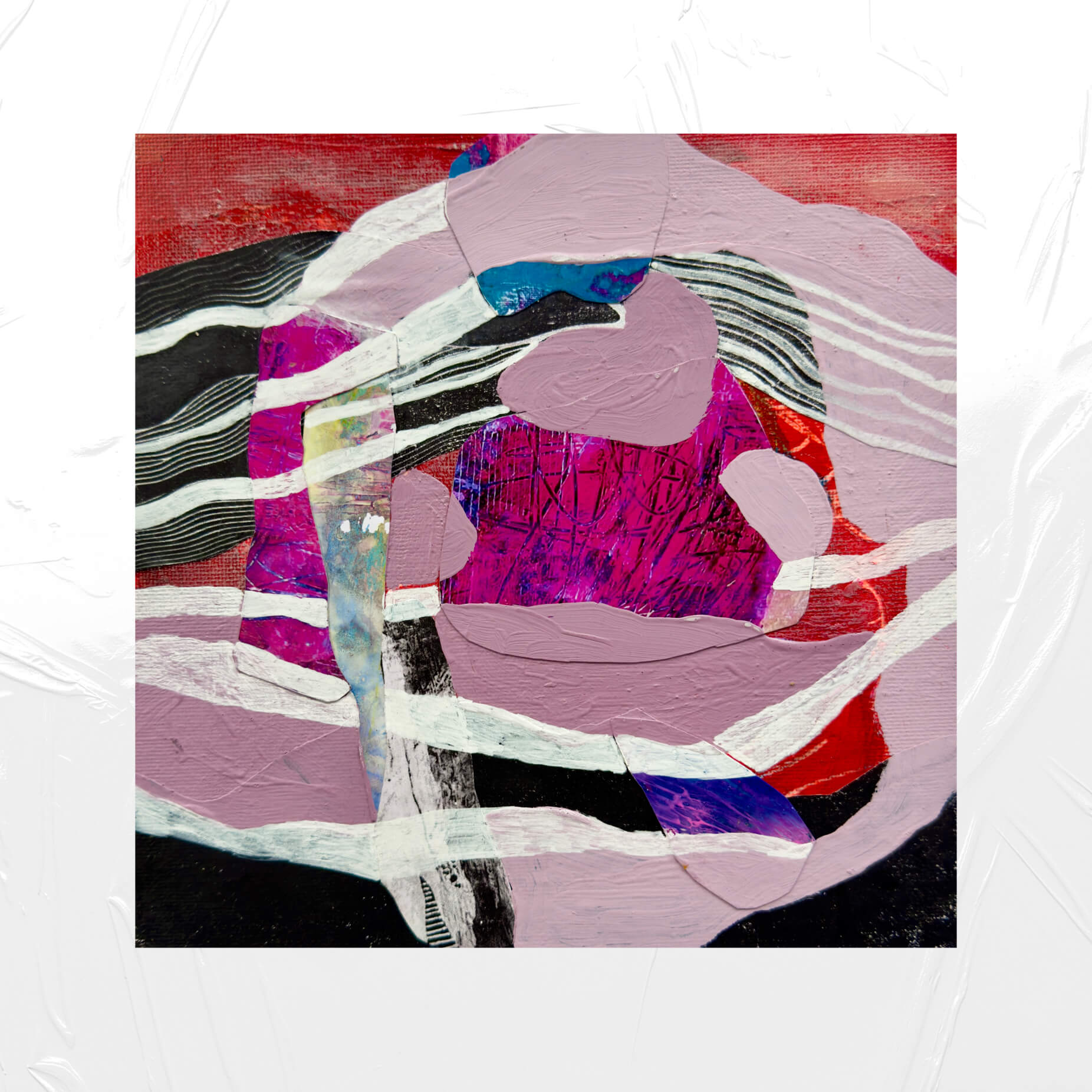
A
A painting opens. Onto the act of seeing. Onto a world with two inhabitants at the beginning. Those safety lines in the soft halo, the pink redemption, the paradoxical blue field-blocks of air – these are not referents, not symbols, but primal events shared between the viewer and the artist. The canvas does not depict: it works a new code for a shared new inlanguage of an inworld. This is non-referentiality: the unhooking of a sign from the known world and the redirection of it in search of a sibling, of a partner, of a kin. Such paintings refuse to denote. They innote. A generative system of strokes and textures that evoke not things, but the common capacity for evocation. A transformational landscape where deep old structures are only felt since only recently surfaced. The echo of something always-almost said and alwaysalmost understood.
Neurodivergent logics needs to find kinship. But the paintings resist the neurotypical demand for legibility. They speak in skips, in loops, in associative leaps—perhaps like those whose minds are wired for patterns beyond linearity. Language unchained from normativity. Here, to perceive is to process chromatics as a geological code.
A
A
Does color have a meaning here? No: here color operates. It organizes future geography and possibility. Language universals – those theoretical bones beneath all speech – twitch within the brushstrokes. The circle, the split, the mirrored asymmetry. There are hints of hierarchy, of movement rules, of empty categories. It is as though the painting models Universal Grammar not through content, but through affective vicinity of oceans, peaks and plateaus. Not sentences, but moving maps.
The painting is a generative grammar of color, movement, repetition: it generates the world, its profiles, its people, its language. The shapes are not things, but potentialities. The canvas doesn’t ask to be interpreted. It allows itself to be inhabited—as one might inhabit a glitch in the language. As one might drift in the non-space between a phrase and a minimal unit of sense. In this way, the works of Adrianna Lup are not art. They are sways. Remnant balancing of some interior speech act, somehow dangerous, never spoken aloud. And this, perhaps, is its most radical offer of Adrianna Lup: an invitation to dwell in the unspoken of the seen.
Curator
Mihaela Pascu,
Deep diving into the color condition
A